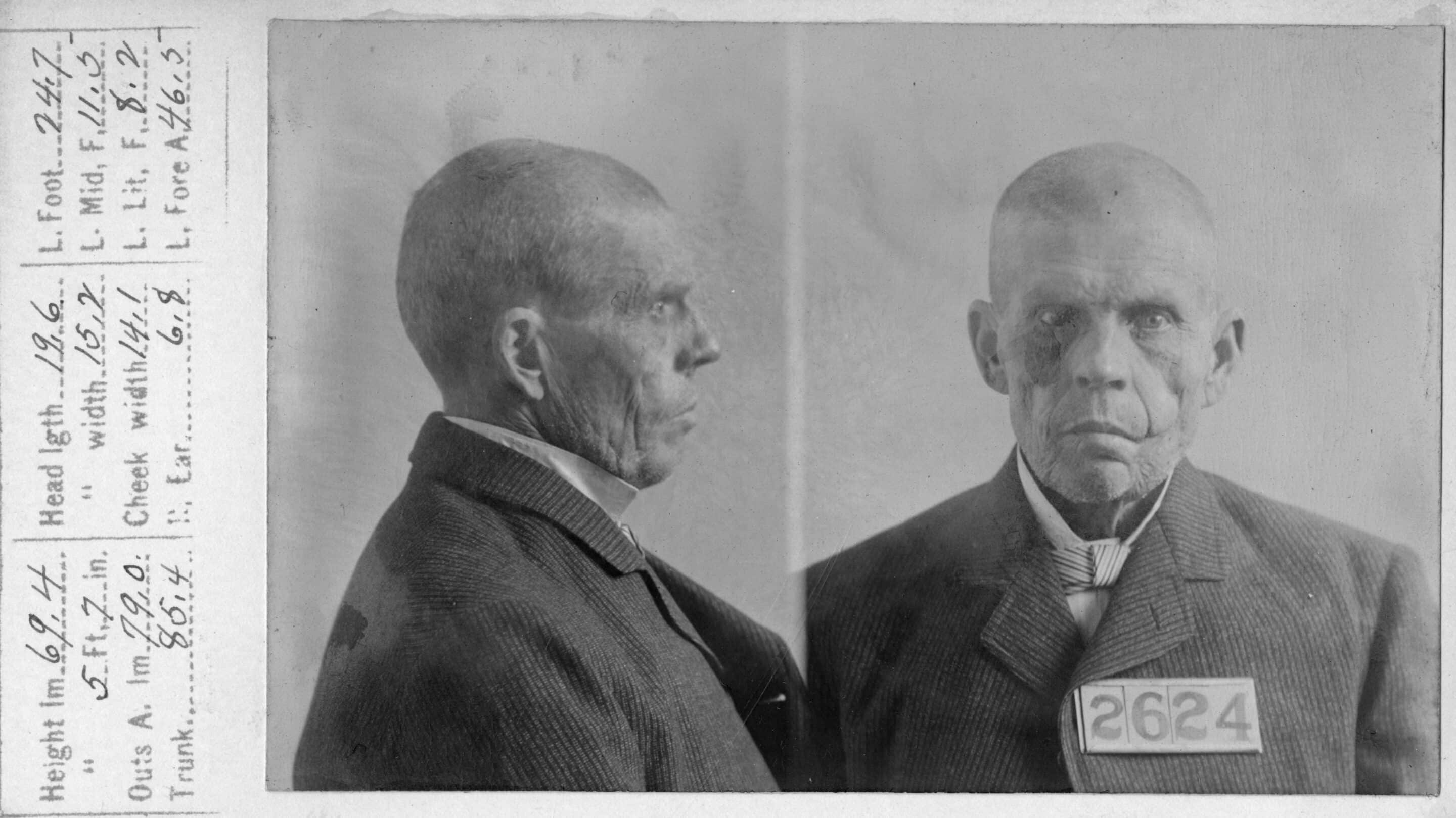Another Kind of Historic Photography – Mugshots
By: David Heighway, Hamilton County Historian
Thanks to the internet, there are many resources available today for doing local history, some of which might be surprising. The Indiana Archives and Records Administration – the State Archives – has put many of their historic records online, including records for the Indiana State Prison at Michigan City and the Indiana Women’s Prison in Indianapolis. They can be found here. When I’m looking up notorious characters in Hamilton County history, their story sometimes feels incomplete. The IARA sources add a lot of material.
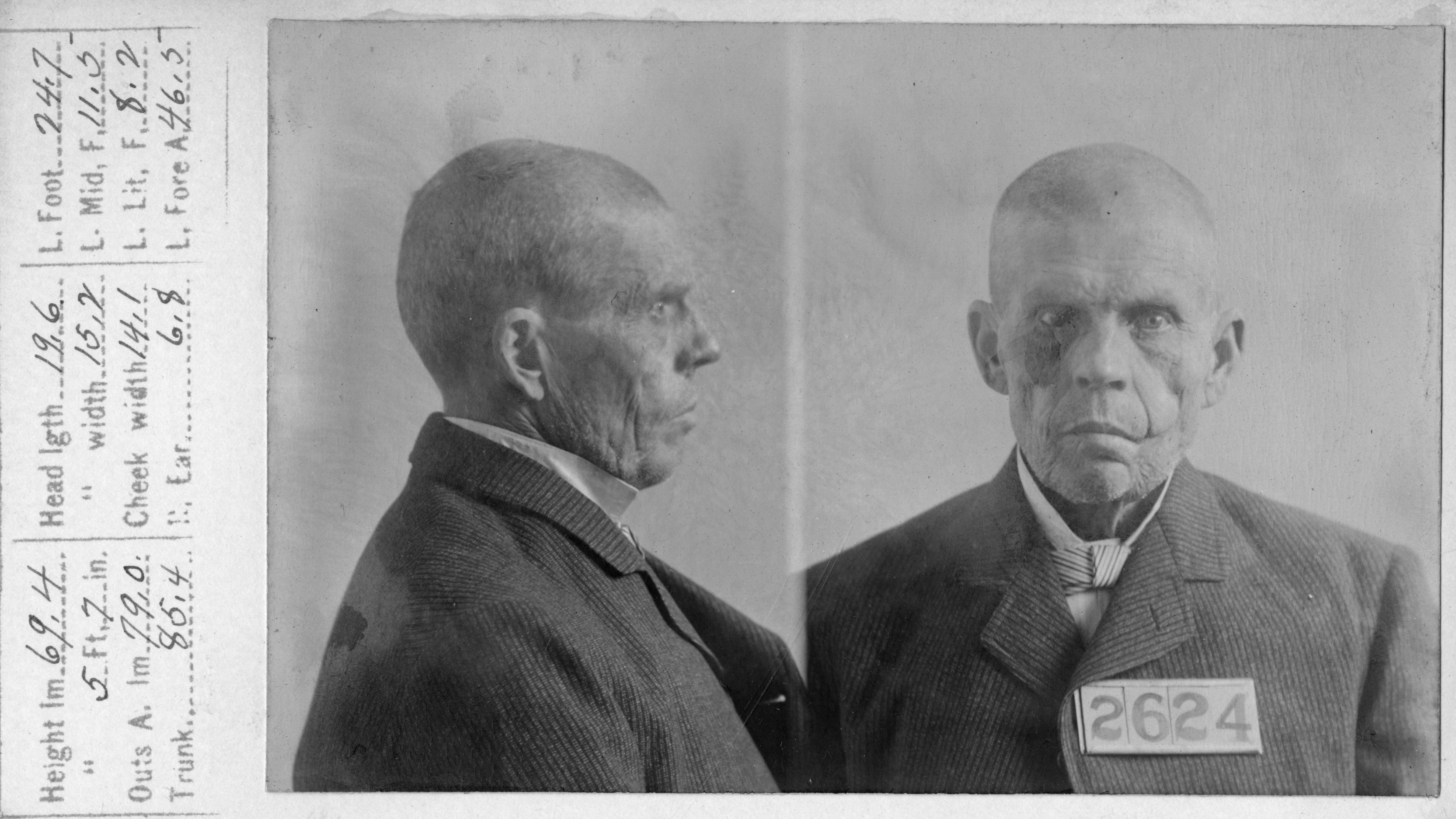
Wade Hampton West – 1904, Courtesy of the Indiana State Archives
For example, there is Wade Hampton “Hamp” West, whom I’ve written about before here and here. We now finally have his photograph, which shows the scar he received in the Civil War. The records also give information about his parents and his background. There may be some possible errors. The prison records says that he was arrested for assault and battery in 1885. However, it doesn’t mention his arrest for manslaughter in 1881 during the Battle of Mudsock.
Another person that I’ve written about before is Edward Hill, a local artist arrested for child molestation in 1892. The IARA has the mugshot and record from his first conviction. When I wrote the blog post, I didn’t know much about his second conviction. It turns out that it was in 1898 for a similar charge to the first conviction.
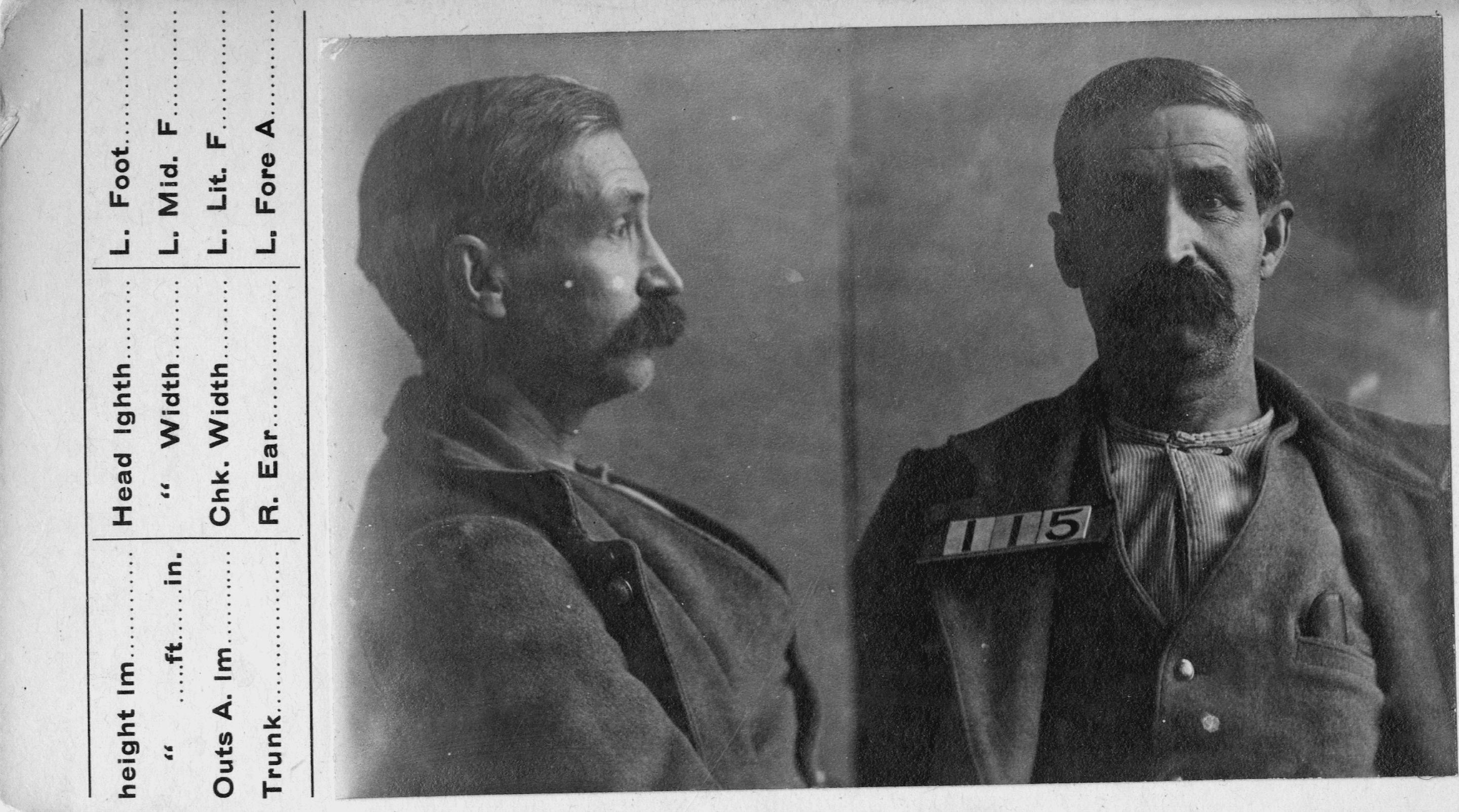
Edward Hill – 1892, Courtesy of the Indiana State Archives
There were some other local people in the State Prison at same time as Hill, which was mentioned in a newspaper report from July 23, 1901. Jerry Simpson was serving time for larceny, after having robbed a man named John Woodruff of $30 in November of 1900. Another was Thomas Mills. He was first incarcerated in December of 1900 for cutting a man named Ed Bradfield with a knife. He was eventually released, but then convicted again in 1907 for obtaining money under false premises from the Dorman Brothers junk dealers. Curiously, the two mugshots seem to be different people, even though the records match up. The 1900 mugshot even has a different name – “Thomas Miller” – written on the back. However, the records clearly say that prisoner #1880 was Thomas Mills.
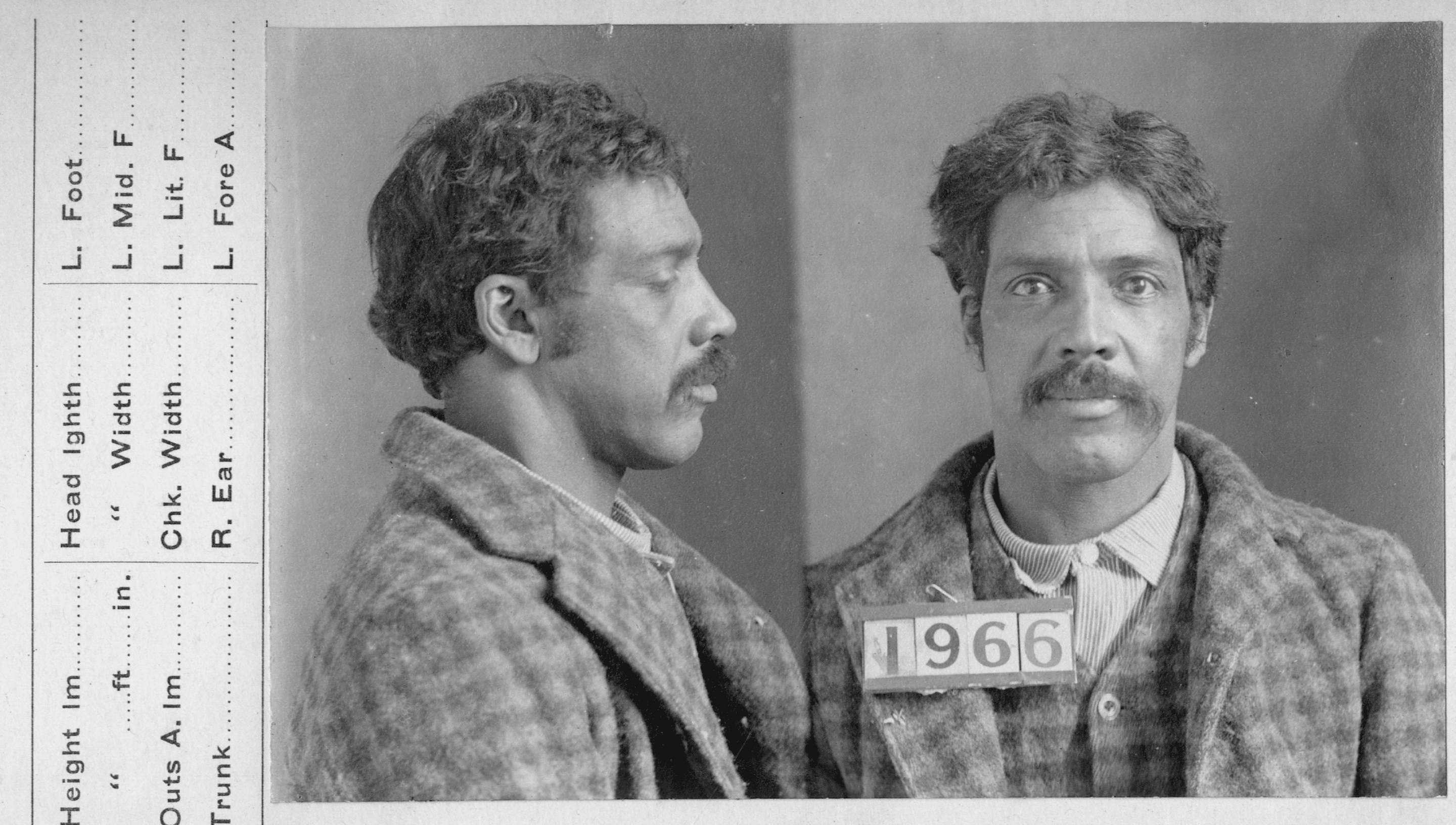
Jerry Simpson -1900, Courtesy of the Indiana State Archives
While there are no mugshots for the records from the Women’s Prison, the documents lead to some very dramatic stories. Julia Sykes of Westfield was arrested for manslaughter in 1892 for shooting a man named John Danforth. Her story was that he had tried to break into her home to assault her and that she had fired a gun through the door. Witnesses testified that her “general moral character was bad”. However, the newspapers pointed out that Danforth was “on a spree” and “had a great weakness for the flowing bowl”. Sykes was eventually found guilty and sentenced to two years at the women’s prison in April of 1892. Interestingly, the prison record listed her character as “good”. There must have been extenuating circumstances because Governor Ira Chase commuted her sentence to one year. Chase lost the next election to Claude Matthews and left office in January of 1893, but Matthews still gave Sykes a full pardon in April of 1893.
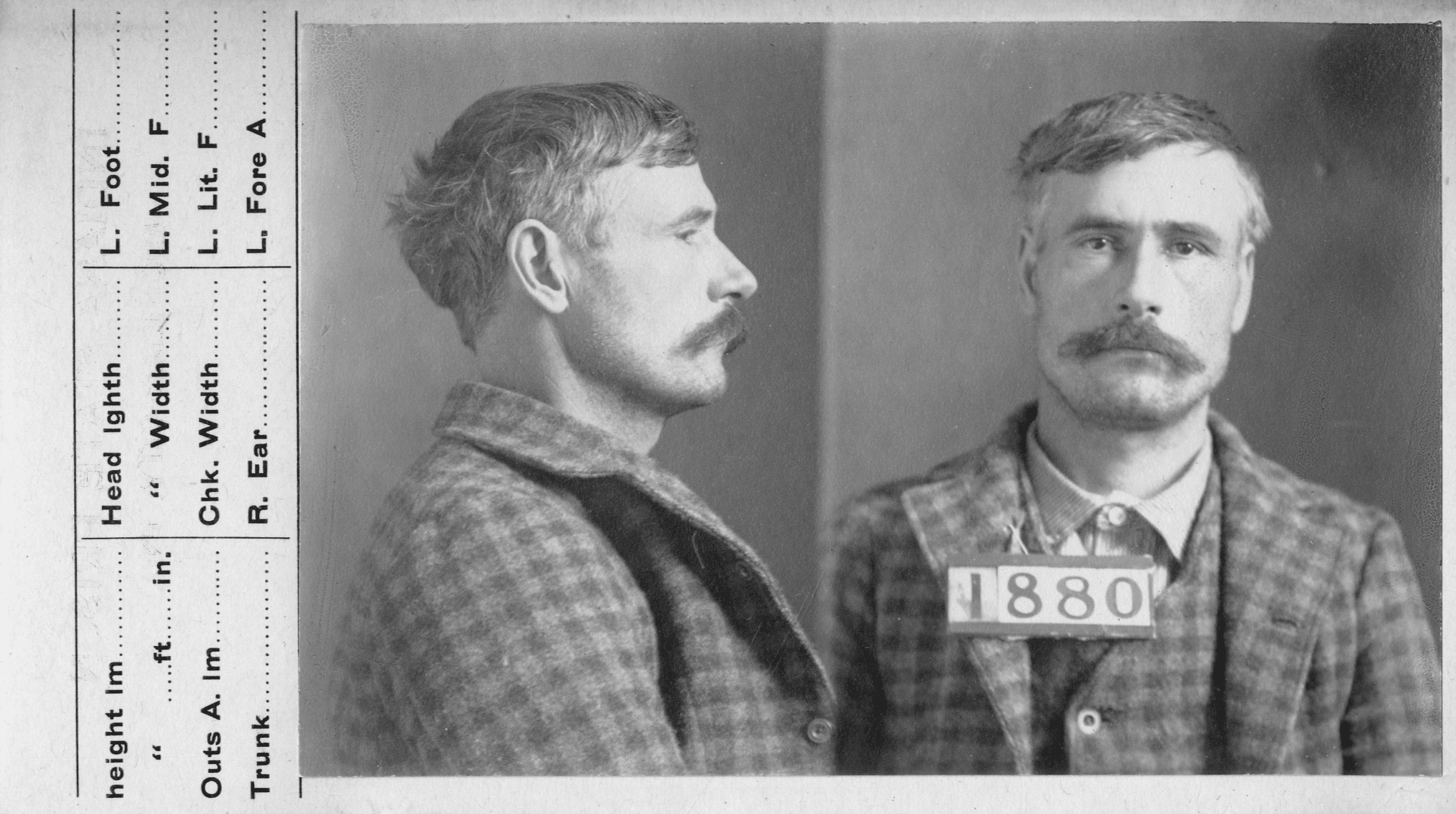
Thomas Mills/Miller – 1900, Courtesy of the Indiana State Archives

Thomas Mills – 1907, Courtesy of the Indiana State Archives
Another dramatic story is of Myrtle Levi Whitesell AKA “Mick Levi”. She ran a “house of ill repute” in Noblesville, married six times, shot the fifth one, and testified in the trial of William Fodrea in 1902. She was arrested and convicted in 1904 for trying to shoot Noblesville Marshal James Stephenson, before being paroled in 1906. The notes in the prison records say, “Woman is a notorious character, has been a prostitute all her life.” In 1914, she was declared of unsound mind and sent to the Central State Asylum in Indianapolis, where she died in 1919.
